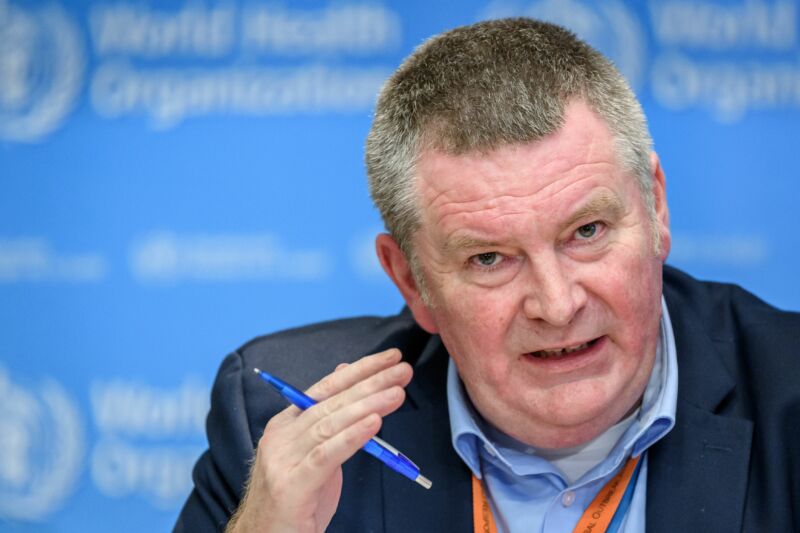
An international team of scientific experts is on the ground in Wuhan, China, finally making progress in its long-sought attempt to understand how the pandemic coronavirus first jumped from animals to humans. But the tedious scientific investigation has become a media frenzy there, and it continues to be plagued by conspiracy theories and thorny international politics.
On Monday, a top official with the World Health Organization had clearly had enough, scolding skeptics and essentially telling conspiracy theorists to show hard evidence or be quiet.
Members of the 15-person team arrived in Wuhan last month and finished their mandatory two-week quarantine last Thursday. Since then, they have made several trips around Wuhan—swarmed by media—including a visit to the hospital that treated the first known COVID-19 cases and the Huanan seafood market, where authorities linked many of the earliest cases. The team also plans to meet with COVID-19 survivors and visit the Wuhan Institute of Virology, which is the center of much speculation and many conspiracy theories that the pandemic virus was engineered and/or accidentally released from a laboratory.
The researchers have noted that they don’t expect to find all the answers on this one trip—and that piecing together how the coronavirus pandemic began may ultimately take years. But team members have so far said they’re happy with the access they’ve had during their visit. One member, Peter Daszak, a zoologist and president of the EcoHealth Alliance, told The Telegraph that they had “access to all the places we want to visit” and their conversations with Chinese scientists and doctors have not been censored or “vetted.” He called the visit “a really big step forward.”
“Who is responsible here?”
Still, the investigation has been dogged by skepticism, particularly as it appeared that China was working to stymie the team’s work and evade any criticism on its early handling of the pandemic. In an NBC interview recorded Sunday, US Secretary of State Antony Blinken said that Beijing is “falling far short of the mark” when it comes to granting the team access and that the country’s lack of transparency is a “profound problem.”
The ongoing criticism has led some to distrust the team’s future findings and has bolstered conspiracy theories, which, in turn, has exasperated officials at the WHO.
A visibly frustrated Mike Ryan—executive director of the WHO’s emergencies program—tried to stamp down critics and conspiracists in a press conference Monday. “If you think you have some answers [on the virus’ origin], please let us know,” Ryan said. “We’ve had this here before, at this very press conference, people making allusions to intelligence that was available that had the answers [and] that was never provided. So, who is responsible here and who is acting responsibly to say that you won’t accept a report before it’s even written?”
Dr. Ryan noted that the team in Wuhan is trying to find the answers and it includes experts from 10 countries, assembled under the World Health Assembly of 194 countries, not the WHO. “It deserves the support of the international community, and it deserves to be able to finish its work,” Ryan said. “Not that all the answers can be found this time, but it’s—certainly for me—time for people who say and think they have information to start providing it.”
"who" - Google News
February 02, 2021 at 06:20AM
https://ift.tt/2NYekvJ
Media frenzy, skepticism engulf virus origin probe—and WHO is over it - Ars Technica
"who" - Google News
https://ift.tt/36dvnyn
https://ift.tt/35spnC7
Bagikan Berita Ini














0 Response to "Media frenzy, skepticism engulf virus origin probe—and WHO is over it - Ars Technica"
Post a Comment